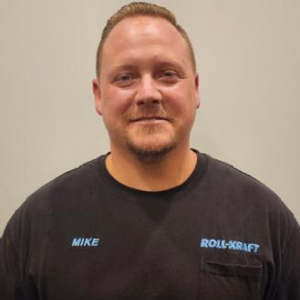Subscribe To Roll-Kraft
Receive the latest news from Roll-Kraft.


Written by: Robert A. Sladky, Vice President Tube Mill Engineering, Roll-Kraft
The purpose of the Shoulder Alignment Tool (S.A.T.) for tube and pipe and roll forming mills is to verify the alignment of the shoulder of the driven shaft to the machined surface of the inboard stand in each pass. Top shaft to bottom shaft, stand to stand; the measurement should all be the same, as outlined in the specifications of the mill’s manufacturers prints. This is providing all the machined surfaces are accurate and dependable and the integrity of the driven shafts, bearings, bearing blocks are in good order.
To follow are the links to ensure your equipment meets these requirements:
Driven Shaft Inspection Guidelines for Tube and Pipe Machines
Properly Preloading Tapered Roller Bearings for Tube and Pipe Machines
There are many forms of fixtures/tools that fit in the category of S.A.T.’s, but for this article, we will be using the S.A.T. that was designed and is presented in Roll-Kraft’s tube and pipe training and roll forming training seminars and illustrated in this document.
First, assemble the S.A.T. so that when the sleeve is saddled on the driven shaft, up against the shoulder, the dial indicator clears the bearing block to be able to indicate off the machined surface of the inboard stand. (See illustrations)

Many times it is only necessary to use plate (A), mounted to the shoulder alignment sleeve to clear the bearing block assembly. Other configurations allow you to mount the dial indicator directly to the sleeve, using no adapter plates.

Once the shoulder alignment tool has been assembled to fit the bearing block, we recommend that the plates and the dial indicator be drilled and pined, to stay in the assembled “fixed” position.
Configure a test fixture in your machine shop to set the S.A.T. at the measurement outlined on your mill manufactures print, and set the dial on the S.A.T. to zero.

Install the outboard stands, and insure the driven shafts are parallel to each other.
In each driven stand, slide the S.A.T. up against the shaft shoulder on the top and bottom shaft of each stand and position the dial indicators stem to the machine surface of the inboard stand. Then as the S.A.T. is used to check the shoulder dimension on each shaft, you can immediately see how much the shoulder of the driven shaft is in, or out from the mill manufacturers shoulder alignment measurement outlined in their specifications.


Add, subtract or move shims on mills that use shims to adjust the shaft/bearing assembly within the bearing block to bring the shaft shoulder in or out to meet the specified measurement, so the S.A.T. reads back to zero. Some mills use permanent alignment spacers to correct shoulder alignment. Configure those accordingly, grind the spacer thinner to move the shaft inboard, or install thicker spacers if the shaft shoulder has to move outboard.
Looking for answers to tube and pipe and roll forming questions 24/7?
Click here to contact our team with any questions you may have about Shoulder Alignment Tools (S.A.T.) for tube and pipe and roll forming mills. One of our technicians will email you an answer or call you for more details.
Simply contact us here or call and get answers 24/7.
Contact Us (888) 953-9400
Roll-Kraft is pleased to announce the appointment of Mr. Mike Samplak to the position of Plant Manager at its headquarters facility in Mentor, OH.

Roll-Kraft is pleased to announce the appointment of Frank Lowery to Vice President of Roll Form Applications.

Roll-Kraft is pleased to announce the appointment of Kevin Gehrisch to the position of President.